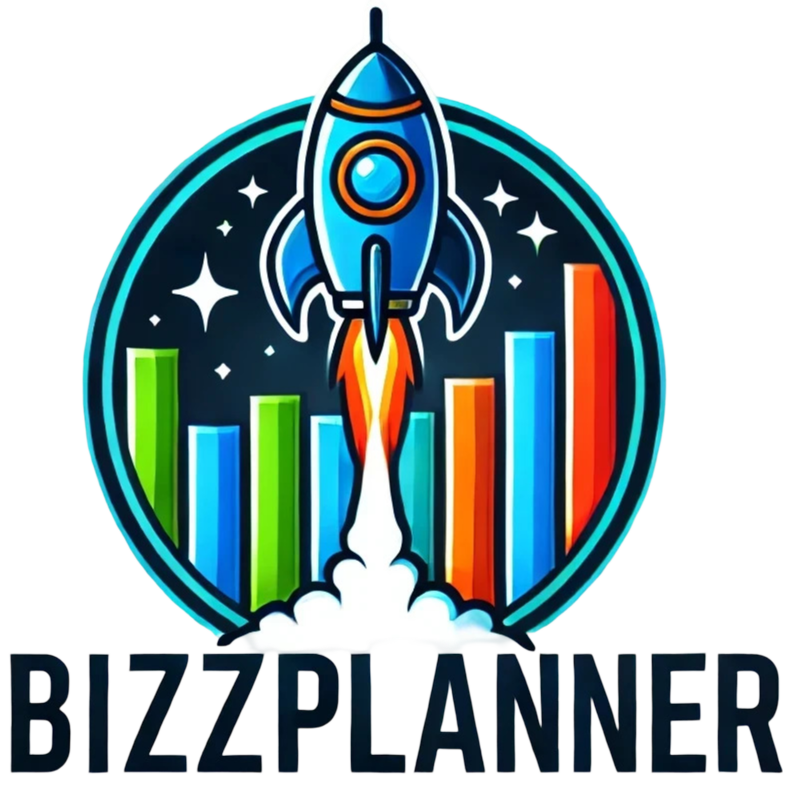Creating a product roadmap can feel overwhelming. You might be staring at a blank page, unsure of where to start or how to make all the pieces fit together. Trust me, you’re not alone in this struggle; planning a product’s future is no small feat!
But hang tight! If you stick with me, you’ll pick up some straightforward strategies to craft a killer roadmap that aligns with your goals and keeps everyone on the same page. Spoiler alert: it can even be fun!
We’ll dive into essential steps like setting clear goals, understanding your audience, and visualizing your ideas so that creating your roadmap becomes a manageable and enjoyable task. Ready to turn that stress into a solid plan? Let’s get started!
Key Takeaways
Stefan’s Audio Takeaway
- A product roadmap guides your product’s direction and goals. Start by outlining objectives and visualize them using tools like Trello or Aha!
- Set SMART goals for clarity and focus, and consider using OKRs for team alignment.
- Gather ideas from your team and customers to innovate, then sort them by feasibility and impact.
- Understand your audience through research to tailor features that meet their needs.
- Define product themes and scope to keep your roadmap focused and prevent scope creep.
- List specific features and requirements, collaborating with development teams to ensure clarity.
- Visualize your roadmap effectively, using colors and icons for easy comprehension.
- Break initiatives into smaller tasks for manageability and boost team morale.
- Regularly review and update your roadmap to keep it relevant and responsive to changes.
- Follow best practices for clarity, transparency, and data-driven decision-making, while encouraging team contributions.

1. Create a Clear Product Roadmap
A product roadmap is your trusty map to navigate the treacherous waters of product development.
It sets out the vision and direction for your product, detailing what you plan to achieve and how you plan to get there.
Start by outlining your key objectives, such as solving a specific customer problem or improving user experience.
Next, visualize your roadmap using simple tools like [Trello](https://trello.com) or [Aha!](https://www.aha.io), making it easy for everyone to follow.
In 2024, expect free product roadmap tools to offer advanced reporting features, letting you track progress and making data-driven decisions.
2. Set Your Product Goals
Having clear goals is like setting a destination before a road trip; it keeps you focused and motivated.
Your product goals should be SMART: Specific, Measurable, Achievable, Relevant, and Time-bound.
For instance, if you aim to increase user engagement, define what that looks like—perhaps raising daily active users by 20% in the next quarter.
Consider using [OKRs](https://en.wikipedia.org/wiki/Objective%E2%80%93key_result) (Objectives and Key Results) to align your team’s efforts and track your progress over time.
This not only fosters accountability but helps everyone understand how their work contributes to the overall goals.
3. Gather and Sort Ideas
Ideas are the lifeblood of innovation, so don’t hesitate to gather them from various sources!
Encourage your team to share their thoughts and solutions during brainstorming sessions or through suggestion boxes.
You can also tap into customer feedback by using surveys or analyzing reviews to discover what your users want.
Once collected, categorize those ideas based on feasibility and impact, creating a prioritization matrix.
This way, you know which ideas are ready to roll and which need more thought before adding them to your roadmap.

4. Know Your Audience for the Roadmap
Understanding your audience is crucial when creating a product roadmap.
Conduct user research and create personas that represent your target customers.
This helps you tailor features and initiatives that resonate with their needs.
For instance, if your audience values mobile accessibility, prioritize mobile-friendly features.
Utilizing feedback tools, like [Typeform](https://www.typeform.com), can help collect valuable insights directly from users.
This way, you can adjust your roadmap based on real user experiences, not just assumptions.
5. Define Product Themes and Scope
Setting themes keeps your roadmap focused and aligned with overarching goals.
Themes could relate to user experience improvements, new feature launches, or market expansion.
Defining scope is equally important; it clarifies what will and won’t be included in each phase of development.
For example, if your theme is user engagement, you might scope it to include gamification elements.
This clear demarcation helps prevent scope creep and keeps the team aligned.
6. Identify Features and Requirements
Once you have your themes, it’s time to list specific features and requirements.
Use your prioritized ideas to select which features will have the most impact.
Write down specific requirements for each feature to ensure clarity during development.
For example, a new feature might require integration with existing systems, and it’s essential to specify that upfront.
Regular collaboration with your development and design teams during this phase is a must.
7. Visualize Your Roadmap Effectively
A well-visualized roadmap can make complex information easy to digest.
Explore various tools, like [Roadmunk](https://www.roadmunk.com), which offer ways to create visual timelines.
The right visual style should highlight key phases, milestones, and dependencies for better understanding.
Consider using color-coding or icons to differentiate between goals, features, and progress.
This way, everyone can grasp the roadmap at a glance, reducing confusion and increasing engagement.
8. Break Down Initiatives into Manageable Tasks
Big initiatives can be overwhelming, so break them down into manageable tasks.
Create smaller, actionable work items that contribute to larger goals.
This method keeps tracks achievable and boosts team morale as they hit milestones.
Using project management tools like [Asana](https://asana.com) can help you track these tasks easily.
Make sure to assign responsibilities and set deadlines for accountability.
9. Regularly Review and Update Your Roadmap
Your roadmap shouldn’t be a static document; regular reviews keep it relevant.
Schedule periodic check-ins, perhaps quarterly, to evaluate progress against goals.
Adjust based on user feedback, market trends, and team capacity; flexibility is key.
Tools that allow for real-time updates, like [Trello](https://trello.com), enhance team collaboration and transparency.
By actively managing your roadmap, you can respond swiftly to changes and keep your team aligned.
10. Follow Best Practices for Creating Roadmaps
Following best practices can significantly enhance the effectiveness of your product roadmap.
Ensure your roadmap is easy to understand, using clear language and concise descriptions.
Maintain transparency with stakeholders, sharing updates and rationale for changes.
Using data-driven insights for decision-making is crucial; seek to incorporate advanced analytics tools wherever possible.
Also, prioritize user feedback rather than assumptions; this keeps your product relevant.
And most importantly, foster a culture of collaboration; everyone should feel they can contribute to the roadmap’s direction.
FAQs
A product roadmap provides a strategic overview of a product’s direction, priorities, and timelines. It helps align stakeholders, guides development, and ensures everyone understands product goals and the journey to achieve them.
A product roadmap should be reviewed and updated regularly, typically quarterly, to reflect changes in market conditions, stakeholder feedback, and evolving business objectives. It ensures relevance and responsiveness to user needs and competitive landscape.
A comprehensive product roadmap should include product goals, key themes, prioritized features, a timeline, and initiatives. It should also align with user needs and reflect feedback from stakeholder discussions to maximize its effectiveness.
To visualize your product roadmap effectively, use charts or timelines that clearly outline initiatives, timelines, and priorities. Tools like Gantt charts or roadmap software can help present information logically, enhancing clarity and communication.
